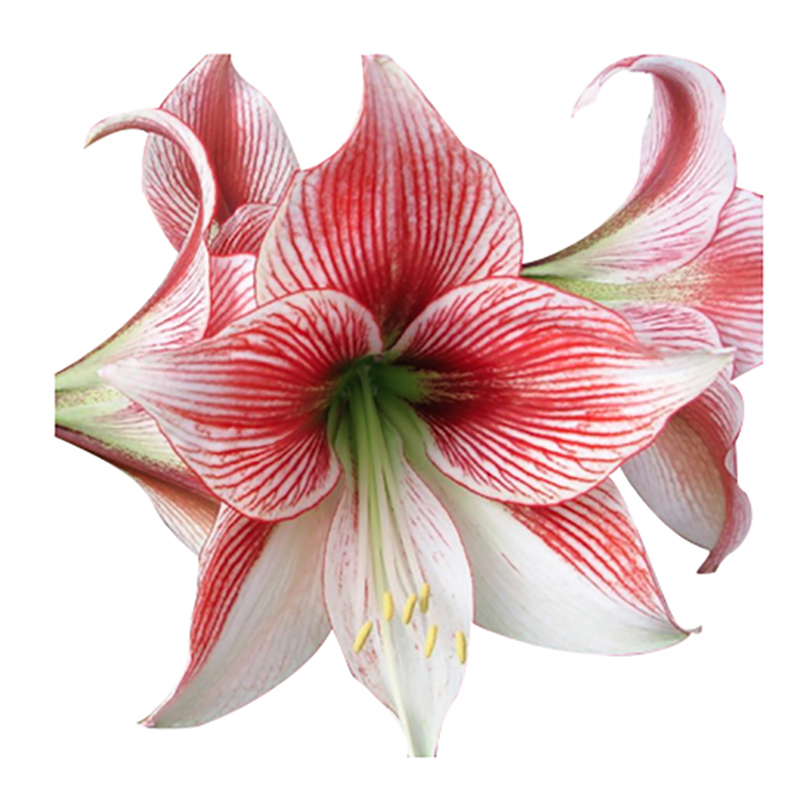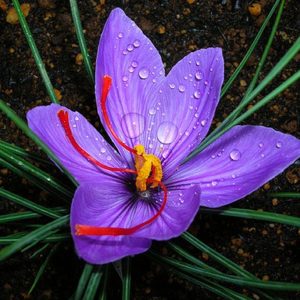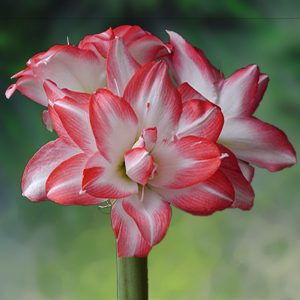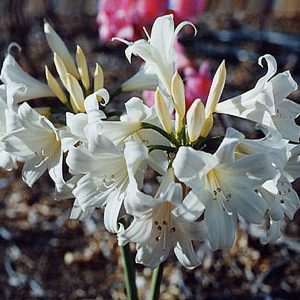Amaryllis Glee
98 in stock
$24.99
Some helpful information and tips on how to care for your Amaryllis Exposure bulbs once they have bloomed.
After your Amaryllis Glee bulbs have bloomed, sometimes the inclination is to toss them out. If you’d like to have them bloom next fall or winter, it’s not hard and below are directions to help you do just that.
When the spectacular blossoms have faded from your amaryllis, snip off the flower stems about 1/2″ from the bulb. Don’t cut off the leaves. (Put a hand under the cut stems as you carry them to the trash because they contain a surprising amount of juice and they’ll drip on floors otherwise.) If the bulbs are big, most will develop second, or even third, flower stalks. Just snip the blossom stalks off as the blooms go by and savor all the flowers your bulbs produce.
After the last bloom stalk of the Amaryllis Exposure bulb has been clipped off your amaryllis will still be attractive, with strappy, dark green leaves. Place your plants in sunny windows so these leaves can gather light, photosynthesize and provide nourishment to the bulbs. Keep watering your plants so the soil says lightly moist, but never soggy.
As late spring and early summer warmth encourages the plants outdoors to leaf out, think about where your amaryllis can spend the summer. Choose a sunny location and take them out for a summer vacation when night temperatures are consistently above 50 degrees. You can leave the bulbs in their pots, if the containers have drainage holes, and nestle them somewhere in the middle to back of the garden where they can blend in. If there are no drainage holes, the pots will fill with water when it rains and the bulbs will rot. To avoid this, simply remove the amaryllis and replant them at the same depth (shoulders exposed) in your garden. Give them a little fertilizer when you provide the same for the rest of the garden; this will help strengthen the bulbs for future flowering.
In early to mid autumn, before the first frost, bring your amaryllis back inside, cut off all the foliage about 1″-2″ from the top of the bulbs, and place the bulbs in a dry, dark place. Basements are good choices, and even the back of a closet will work. You are trying to force your bulbs to take a rest, to slip into a few weeks of dormancy before starting a new flowering cycle. During this period, withhold all water.
Let your amaryllis sleep for ten to twelve weeks. Then, start the growing cycle over just as you did when your first planted the bulbs. Replace the soil with fresh mix, remove any dead leaves and old, peeling bulb sheaths (these look like the dried, outer skins on an onion) and replant, again with the bulb shoulders exposed. Place your bulbs in bright light and give them one good drink of water. The combination of light and water will “e;wake up”e; the plants and encourage them to start growing again. When the first little leaves appear, and not before, begin watering regularly. (If you give a steady supply if water to a bulb with no foliage, the bulb will rot.)
With good care most amaryllis bulbs will bloom seasonally for years. Some cultivars even develop offspring bulbs along side the mother bulbs and these youngsters eventually grow large enough to bloom, too.
Depend on amaryllis for beautiful fall and holiday flowers, winter through spring houseplants and summer garden enhancers. So don’t toss those old Amaryllis Exposure bulbs.





Reviews